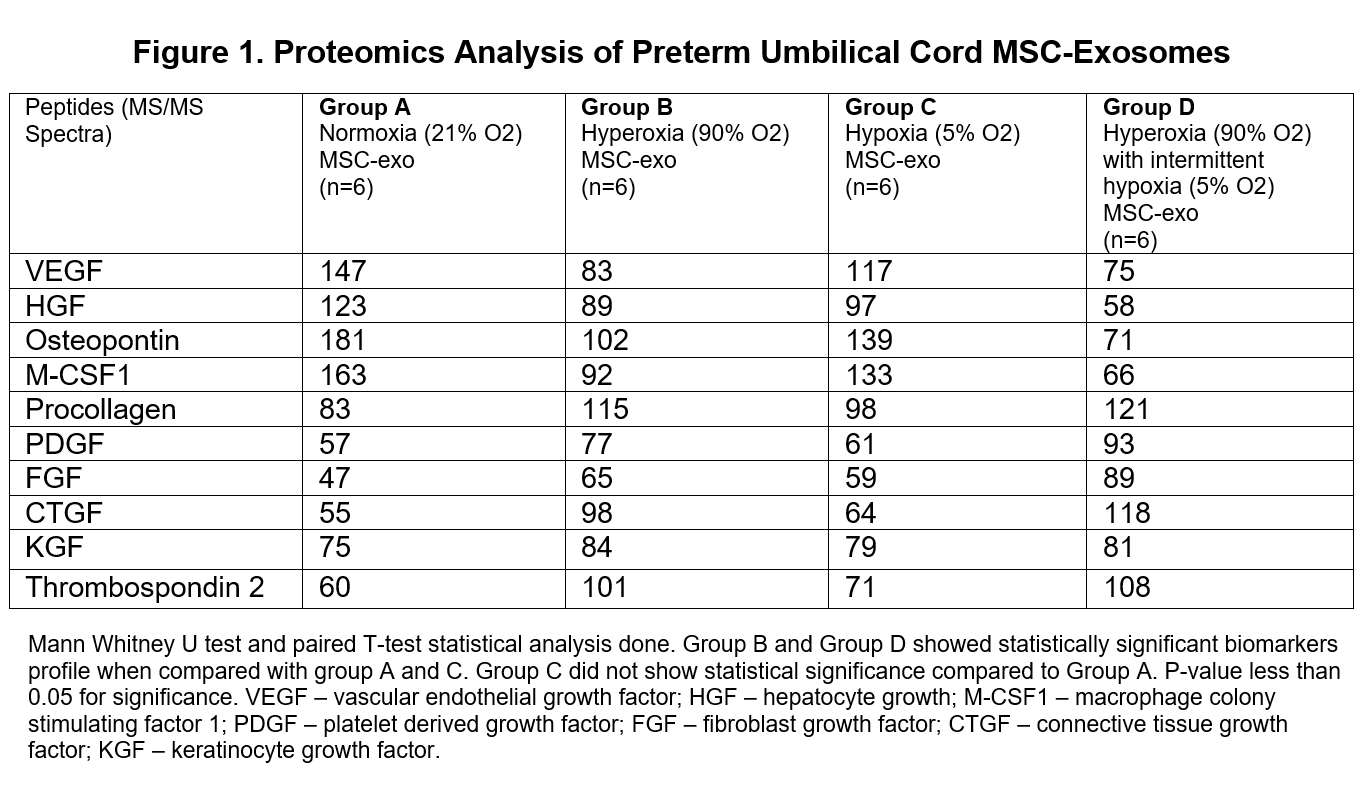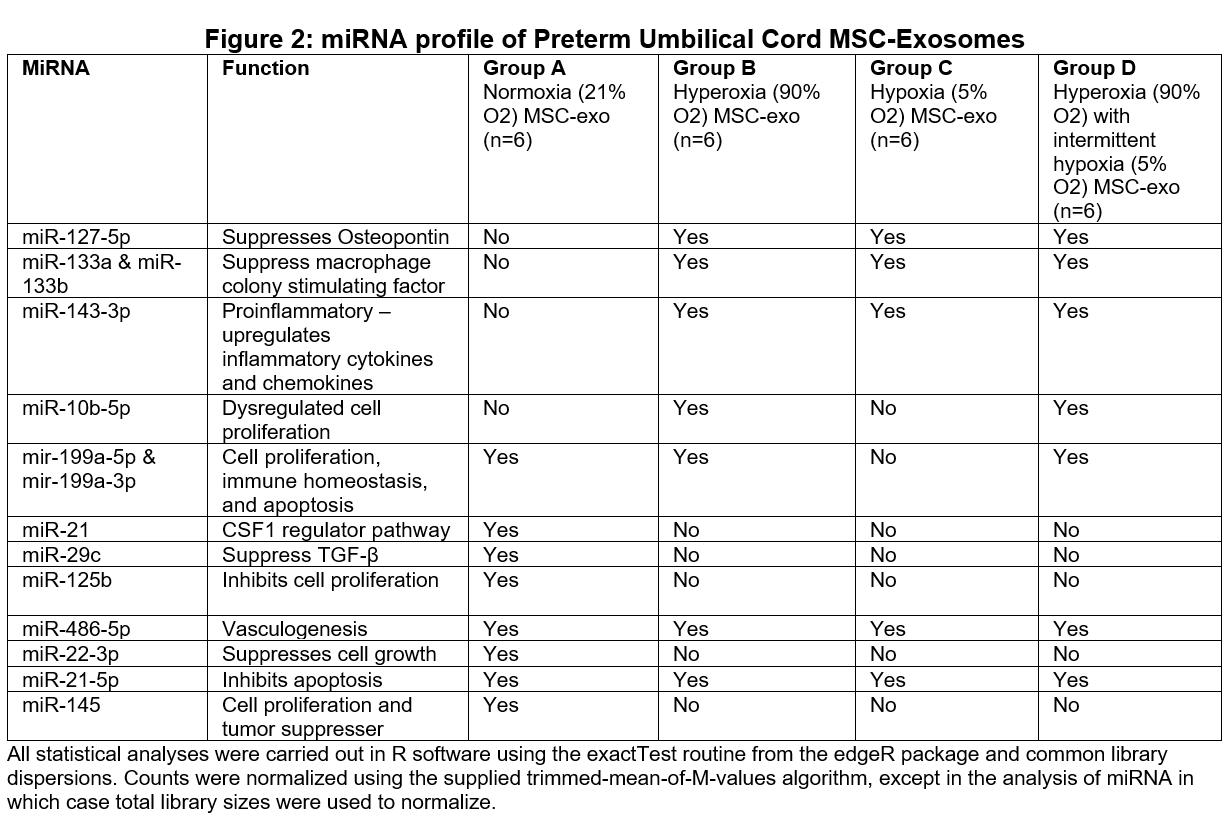Neonatology
Session: Neonatal Pulmonology - Clinical Science 5: New-Old ideas, Stem Cells
578 - Regulatory Profile of Human Extremely Preterm Umbilical Cord Derived Mesenchymal Stem Cell Exosomes Exposed to Extremes of Oxygen Conditions
Monday, May 6, 2024
9:30 AM - 11:30 AM ET
Poster Number: 578
Publication Number: 578.2963
Publication Number: 578.2963

BRYSTON CHANG, MD (he/him/his)
Fellow
University of California, Irvine, School of Medicine
Orange, California, United States
Presenting Author(s)
Background: Mesenchymal stem cells (MSCs) and their exosomes (MSC-exo) have shown promising results in neonatal Bronchopulmonary dysplasia (BPD). BPD is a chronic debilitating disease of extremely preterm infants resulting from oxygen toxicity (prolonged hyperoxia with periods of intermittent hypoxia), inflammation, and ventilator use leading to arrested alveolar development. We hypothesized that extremely preterm MSCs harvested from 22-24 weeks’ gestational age (GA) infants will have altered growth and MSC-exo profile when exposed to experimental BPD conditions.
Objective: Our aims included generation of MSCs from preterm 22-24 weeks’ GA umbilical cords, assessment of MSC growth along with MSC-exo isolation and content analysis in extremes of oxygen conditions.
Design/Methods: The study was approved by the Institutional IRB. The umbilical cord Wharton’s jelly MSCs harvested from from extremely preterm 22-24 weeks’ GA cords, propagated, and immunodepleted to obtain MSCs. MSCs cultured for 48-hours under extremes of oxygen conditions as follows:
Group A: Control cells in Normoxia (21% O2)
Group B: Hyperoxia (90% O2)
Group C: Hypoxia (5% O2)
Group D: Hyperoxia (90% O2) with intermittent hypoxia (5% O2) for one hour every 6 hours
MSC growth assessed via apoptosis assays. MSC-exo isolated and proteomics analysis done to determine secreted biomarkers. MSC-exo microRNA (miRNA) levels determined using TaqMan RNA kits per manufacturer protocols.
Results: Flow cytometry apoptosis assay showed 13% apoptosis in control MSCs in normoxia (group A). Experimental BPD groups (B and D) showed statistically significant higher apoptosis compared with control group A. Group B with persistent hyperoxia showed 47% apoptosis whereas group D with hyperoxia with intermittent hypoxia showed 63% apoptosis. Group C with hypoxia showed 18% apoptosis which was not statistically significant compared to control group A. Proteomics analysis identified significantly lower lung vascular and epithelial injury preventive biomarker concentration in MSC-exo exposed to extremes of oxygen conditions (group D with lowest followed by group B and then group C) (Figure 1). miRNA analysis showed similar profile like Proteomics with decreased miRNA profile in MSC-exo exposed to extremes of oxygen conditions (group D with lowest followed by group B and then group C) (Figure 2). All these results were statistically significant.
Conclusion(s): Clinical BPD conditions (Hyperoxia as well as hyperoxia alternating with hypoxia) lead to faster extremely preterm human umbilical cord MSC apoptosis with lack of MSC-exo derived protective peptides and miRNAs.


